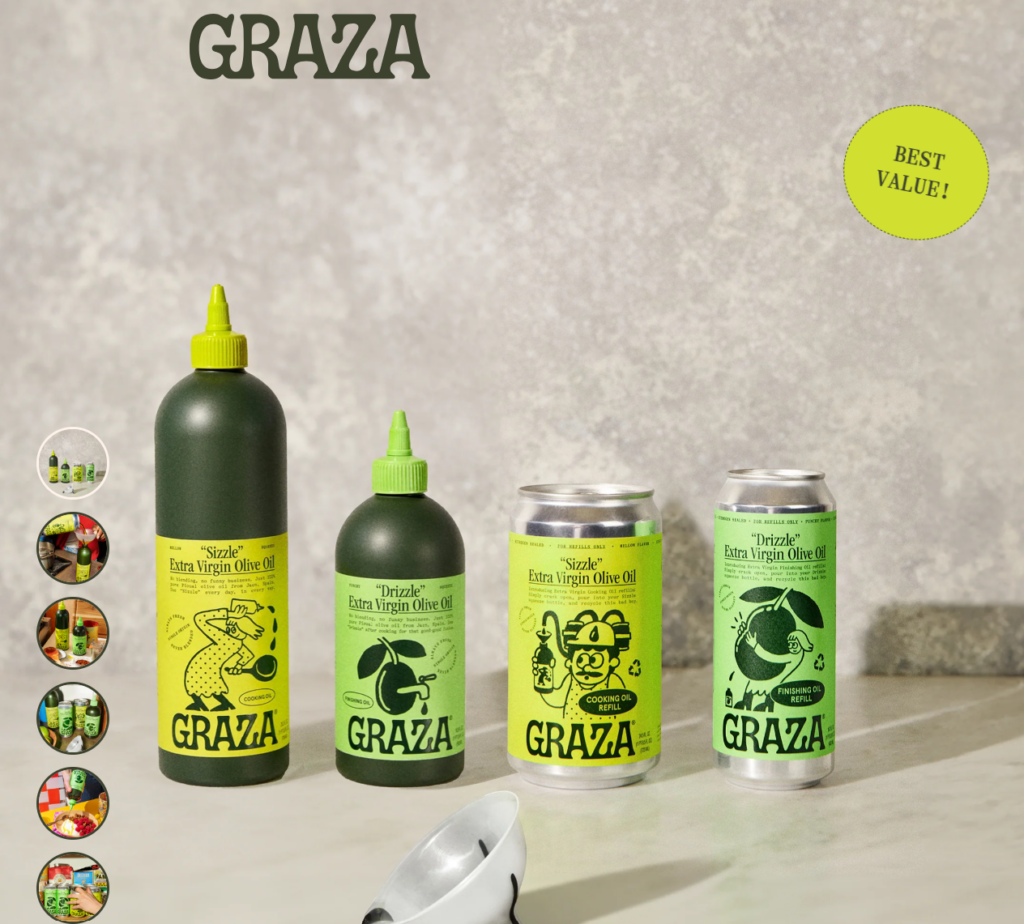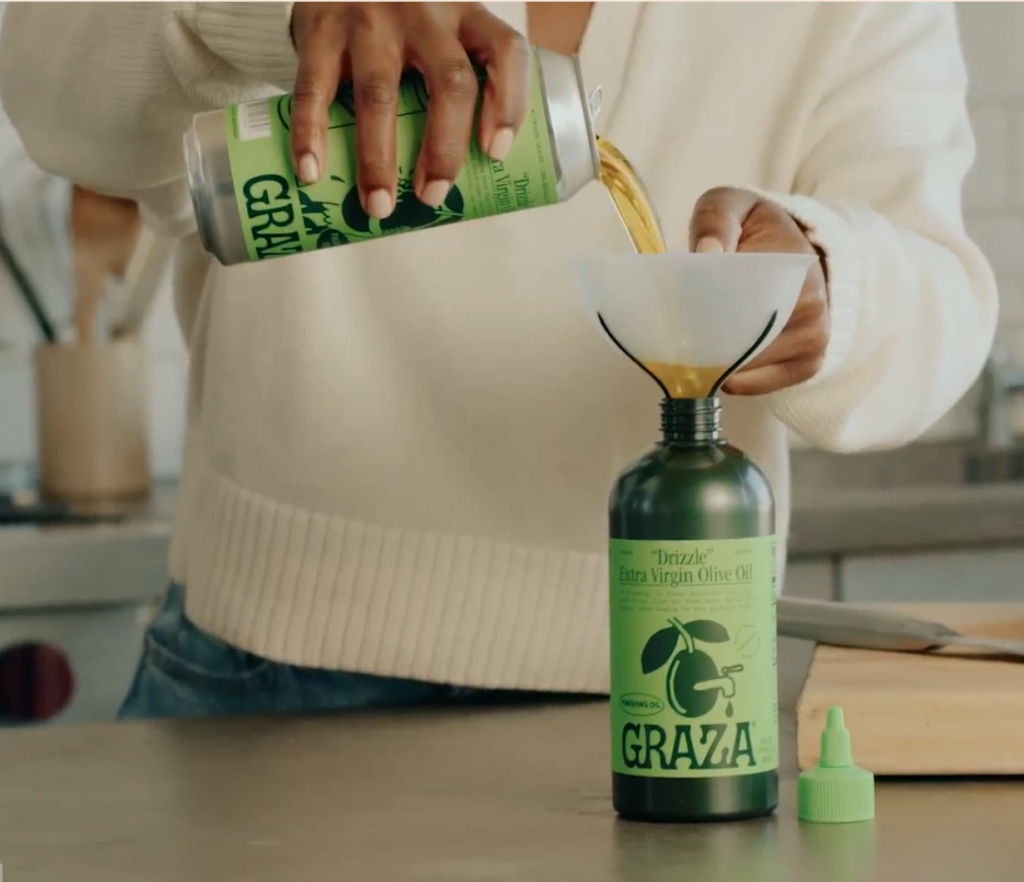This article is going to dive into a key mistake that so many business owners (myself included) fall into when building their brand – and that is copying the competition. Whether consciously or not, trying to emulate what’s trending in your industry seems like a fail safe way to get ahead:
- stick with what is clearly working for others
- stick with what your audience expect
- follow the tried and tested route
And the thing is, this approach actually works some of the time – it may even be working to a certain extent for you now. But, with this article, I’m going to dive into how blending in and following the crowd is actually doing your business more harm than good and instead, how to make your brand stand out.
Playing it safe in business is the fastest way to disappear.
You didn’t start your business to be just another option. You started it because you saw a gap, a better way of doing things, a vision that felt too good to ignore. But if your brand looks, sounds, and feels like everyone else in your industry, you’re blending in, not standing out – and blending in is a guaranteed way to get lost in the noise.
The truth? The brands that thrive – the ones that captivate, inspire, and command attention – aren’t afraid to take up space. They dare to be different. They aren’t following trends; they’re creating them. And if you want to build a brand that turns heads, sparks conversations, and connects with the right people, you need to stop looking sideways at your competition and start carving your own lane.
Let’s talk about why playing it safe will keep you stuck – and how a bold, unapologetic brand is the key to unlocking the business (and the freedom) you’ve been working so damn hard for.
1. The problem with playing it safe and copying the competition.
Why founders default to industry norms:
Many founders unintentionally mimic their industry’s trends because it feels like the safest route to success. Fear of standing out, imposter syndrome, and a deep-seated need for validation all play a role. It’s easier to copy what’s working for others than to take a risk on something unproven.
The hidden cost of blending in:
- Forgettable branding – If your business looks, sounds, and operates like everyone else’s, it won’t stand out. People may engage but won’t remember you.
- Price competition – When there’s nothing to make you stand out from your competitors, the only way to compete is by lowering prices, which attracts budget-conscious clients rather than those who truly value your work.
The biggest risk of blending in? You lose yourself.
One of the biggest costs of blending in, is that if you do it for long enough, you actually start to lose your unique personality, you tame it, you hold yourself back because it’s just not the done thing. But, the thing is, your audience, your people want to see that. They’re fed up with scrolling through endless options of the same. They want to be captivated, they want to be wowed by what you’ve got. Your personality, your passion, and your desire to create something just for them is what’s going to set you apart.
How to shift focus from competitors to your own uniqueness:
- Instead of asking, “What’s working for them?” ask, “What do I believe in? What do I want to create?”
- Instead of trying to appeal to everyone, focus on the exact kind of people you’re meant to serve.
A simple exercise to uncover what sets you apart:
- Write down three things that frustrate you about your industry.
- Write down how you do things differently.
- Turn those differences into a core message that defines your brand.
This is how you shift from competing to leading.
2. Why bold brands thrive
The psychology of confidence and differentiation:
People are naturally drawn to confidence. A bold brand signals certainty, self-assuredness, and a clear sense of direction. When a brand stands firmly in its vision, it doesn’t just capture attention, it becomes magnetic – because people want to be part of something with conviction and something different.
How disruptive brands build movements, not just businesses:
The most successful brands don’t just sell products or services – they challenge norms, spark conversations, and create experiences people want to be part of. They take a stand. They attract loyal communities.
This idea isn’t reserved for the billion dollar brands – creating a movement doesn’t have to mean changing the world, it’s about elevating the impact your brand will have on your people.
Example in the real world:
A perfect example of a brand that defied the industry norm to carve their own path is Graza.
In a market almost entirely comprised of either expensive high quality olive oils or low cost, low quality blended oils, Graza knew there was a gap for a high quality, affordable option and it jumped right in.
With a fun, playful and incredibly creative brand identity, Graza immediately created something that drew attention and allowed it to stand proud on the shelf. Eschewing the typical refined traditional branding approach to instead create something bold, eye catching and designed to disrupt.
Another key point of differentiation is in the bottle design. When you think of expensive olive oil, your mind immediately pictures a glass bottle. Graza took this tried and tested approach and instead created something unique – a plastic squeezy bottle – that would not only stand out on the shelf but also prove to be an incredibly user friendly design decision.



3. What it means to be unapologetically you
This isn’t about being different for the sake of it – it’s about authenticity:
Many founders mistakenly believe that being bold means being the loudest voice in the room; that a bold brand means bright, neon colours and choosing the quirkiest font you can find. But the real power comes from standing firm in who you are—your mission, your values, and the unique way you see the world.
The power of brand storytelling:
Your story isn’t just a nice addition to your brand – it is your brand. The more you weave your experiences, beliefs, and mission into your messaging, the stronger your connection with your audience.
Crafting a brand that stands out and an identity that feels like you:
It’s not about forcing an aesthetic or tone that isn’t natural – it’s about amplifying what already exists.
- If your personality is playful, let that come through in your visuals and copy.
- If your brand is rooted in deep expertise, position yourself as a thought leader with bold, confident messaging.
- If your mission is to challenge the status quo, make sure your brand doesn’t feel like every other “safe” version of what you do.
Authenticity is the most powerful differentiator.
Consistency is king:
The key to building that brand recognition and gaining the trust and loyal following of your people is consistency. Consistency across every touchpoint. Whether it’s an Instagram post, the homepage on your website, or your packaging on the shelf, your brand should be instantly recognisable.
Let’s take Graza as an example again. They’re so confident in their brand story, their visuals and their messaging that every element of their marketing looks and feels uniquely them.
Final thoughts
Playing it safe won’t get you noticed. It won’t build loyalty, spark excitement, or magnetise the kind of clients who see your value and are ready to invest. It keeps you stuck in a cycle of trying to be what you think people want, instead of standing firm in what makes you undeniably you.
But a brand that’s unapologetic? That takes a stand? That refuses to blend into the background? That’s the kind of brand that thrives. The moment you step into your power and stop seeking approval is the moment your brand starts resonating with the right people.
So, if your brand feels like it’s fading into the crowd – if you’re done watering yourself down and ready to create something that’s bold, magnetic, and unmistakably yours – I’m here to help.
Let’s build a brand that demands attention. One that turns heads for all the right reasons.
